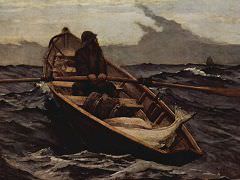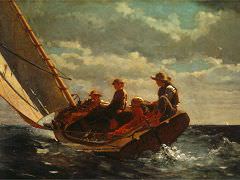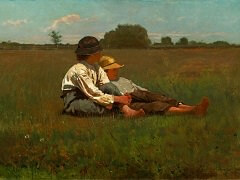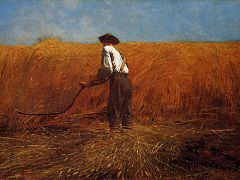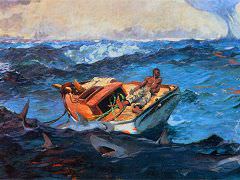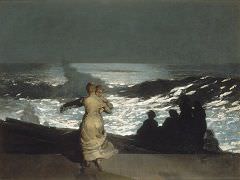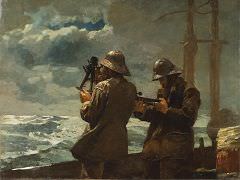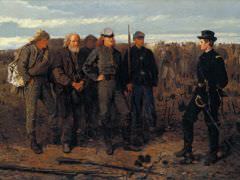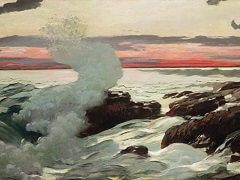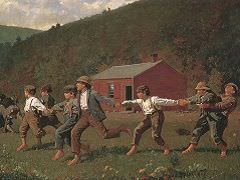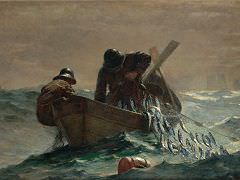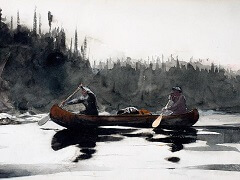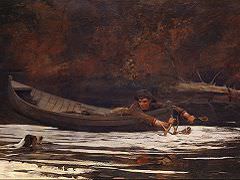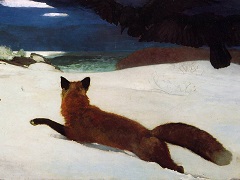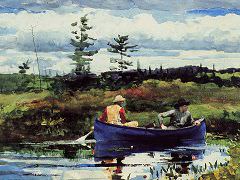Right and Left, 1909 by Winslow Homer
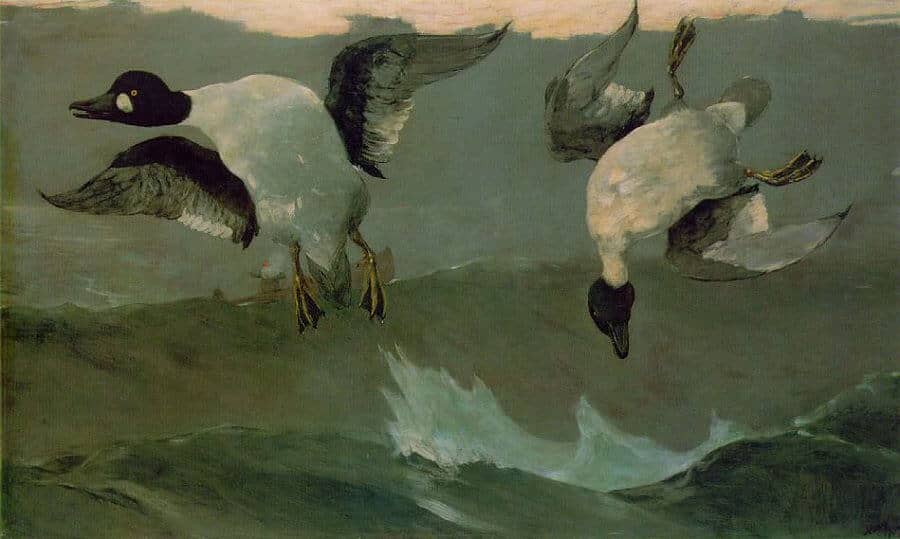
Homer painted less frequently in the last decade of his life. The paintings he did produce, deepened by intimations of mortality, include some of the most complex pictures of his career.
Right and Left, one of Homer's last paintings, is at once a sporting picture and a tragic reflection on life and death. The title refers to the act of shooting the ducks successivelly with separate barrels of a shotgun. The red flash and billowing gray smoke barely visible at the middle left indicate that a hunter has just fired at the pair of goldeneye ducks. The picture captures the moment but leaves important questions unresolved. Has the rifle hit its mark? If so, does the downward plunge of the bird on the right indicate that it has been hit, or is it diving to escape? The duck on the left seems frozen, but that stasis does not necessarily reveal its physical condition. And consider the precarious position in which Homer has placed the viewer, observing the scene while apparently hovering in mid-air, at one with the threatened creatures and directly in the path of the oncoming shotgun blast. With its ambiguous message, unconventional point of view, and diverse sources of inspiration ranging from Japanese art to popular hunting imagery, this painting summarizes the creative complexity of Homer's late style.
Although Winslow Homer avoided any discussion of the meaning of his art, the progression of his creative life attests to the presence of a rigorous, principled mind. Continuously refining his artistic efforts, Homer created work that was not only powerful in aesthetic terms but also movingly profound. Acclaimed at his death for his extraordinary achievements, Homer remains today among the most respected and admired figures in the history of American art.

